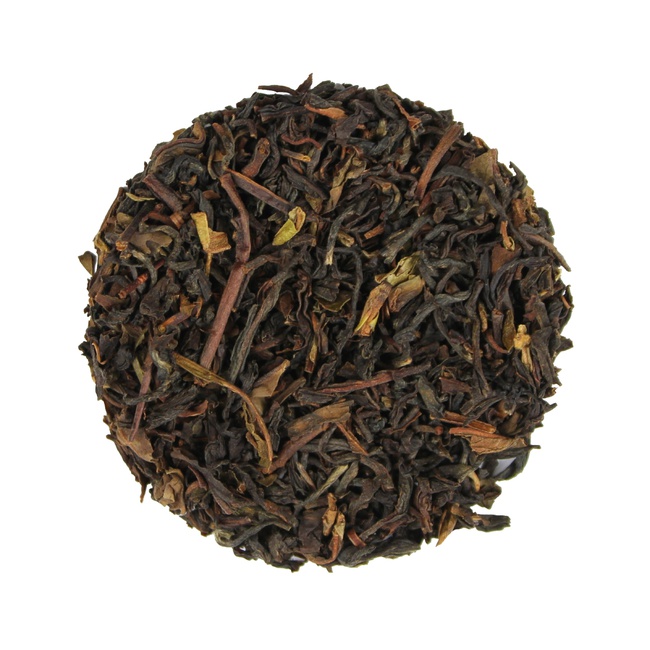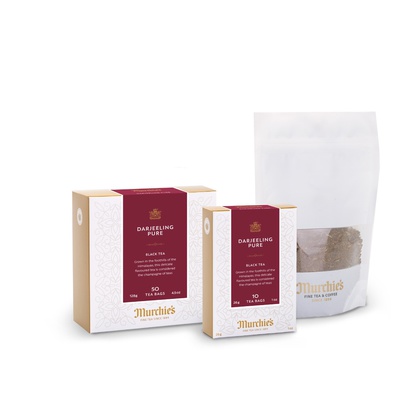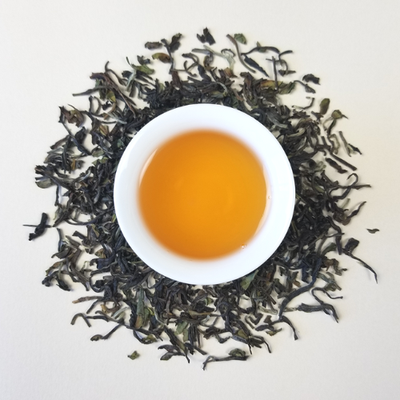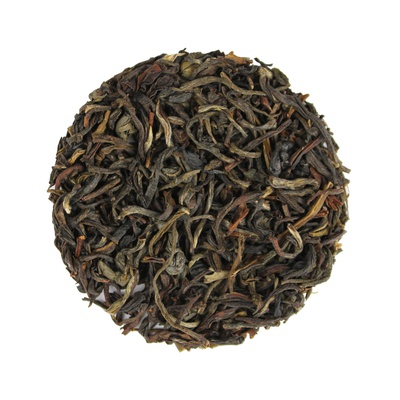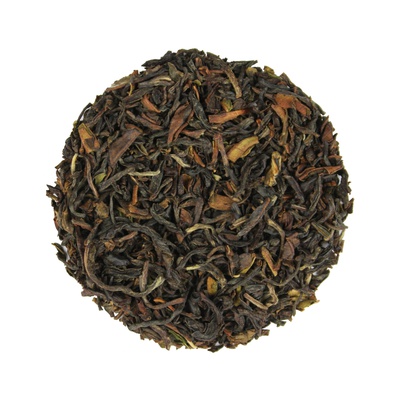DARJEELING ESTATE LOOSE TEA
MEDIUM-STRONG
Darjeeling Estate Tea is a second flush black tea with a well developed flavour, sweet and smooth. When compared to a first flush, the brew is slightly darker and the tea's flavour is deeper.
2nd Flush Darjeeling is slightly darker, with more intense flavour, than 1st Flush. It is beloved for its distinctive muscatel note.
| Darjeeling Estate - Loose 2oz/56g |
$8.85 |
|
| Darjeeling Estate - Loose 4oz/113g |
$16.05 |
|
| Darjeeling Estate - Loose 8oz/227g |
$29.10 |
|
| Darjeeling Estate - Loose 16oz/454g |
$52.95 |
|
Grown in the northeast corner of India, among the foot hills of the Himalayan mountains, Darjeeling is a highly sought, coveted black tea.
Graded as FTGFOP1: second flush season.
It is the combination of high mountains, steep terrains, well-drained soils, extreme cold and intense heat, as well as a good level of rainfall that contribute to the exquisite muscatel character and floral aroma of Darjeeling teas.
| Caffeine | Caffeinated |
|---|---|
| Cup Strength | Medium-Strong |
| Origin | India, Single-origin |
| Tea Format | Loose Tea |
| Type | Black |
Full and classic Review by Michelle Butler Hallett
1.25 tsp for 250mL water 95C, steeped 4 minutes, drunk bare. Dry leaf: brown flecked with some green and a few twigs. Aroma: winey wood. Wet leaf: the green leaves brghten and open up fast — very pretty. Aroma: tannins, wet earth. Liquor: medium brown, a bit darker than I expected. Full and classic Darjeeing taste with a good body. I prefer a second flush, so I’m quite happy here. Lots of muscatel, and a slight bite back, almost like the pepper in some Yunnans.
Posted on 2019-01-10Rich, Robust, Smooth, Delightful Review by Caroline from Three Rivers, Ca.
I have not found a Darjeeling elsewhere that has as full bodied a flavor, & delivers the satisfaction of Darjeeling Estate Tea. It is bold and complex, yet smooth and not overpowering. Several others I have tried are either too weak to impart much flavor or overly bold with bitter aftertaste! I enjoy drinking it with a teaspoon of honey and squeezed lemon slice.
Posted on 2015-01-01Robust, Flavorful and Tasty Review by Phil from Oregon
We have tried many teas and tea blends to get a robust round tea for every day. Our very clean northwest water does not need sharp tannins to offset minerals it does not have. This tea has great varietal and very robust flavor with rounded soft tannins that make it drinkable without additives. I drink mine plain; my wife with milk. Five minutes steeping, remove the tea sock, enjoy! I keep an extra pound or two in the tea chest to avoid running out.
Posted on 2013-09-01Earthy and Smooth Review by Kyla
This Darjeeling Estate Tea is soo smooth and earthy. I really enjoy this tea anytime of day. It's amazing becauase the Darjeeling Estate is the first Tea I could ever drink without fixings. Its that good!
Posted on 2012-11-05Write your Own Review
You're reviewing: Darjeeling Estate Loose Tea
Also Recommended
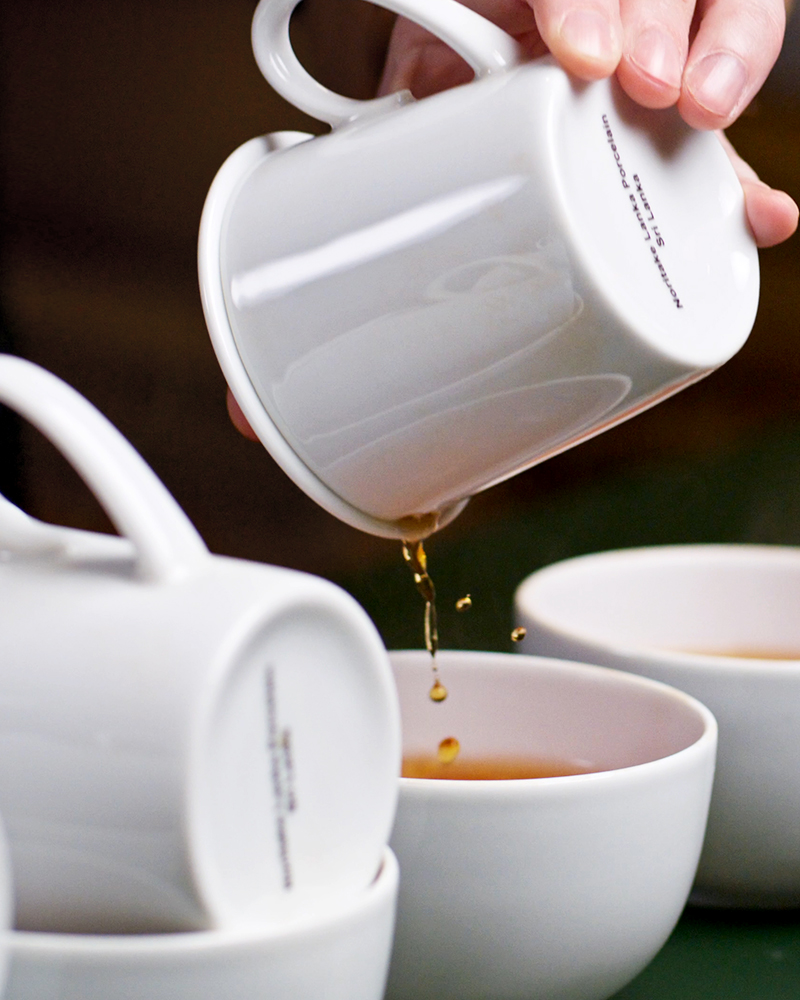
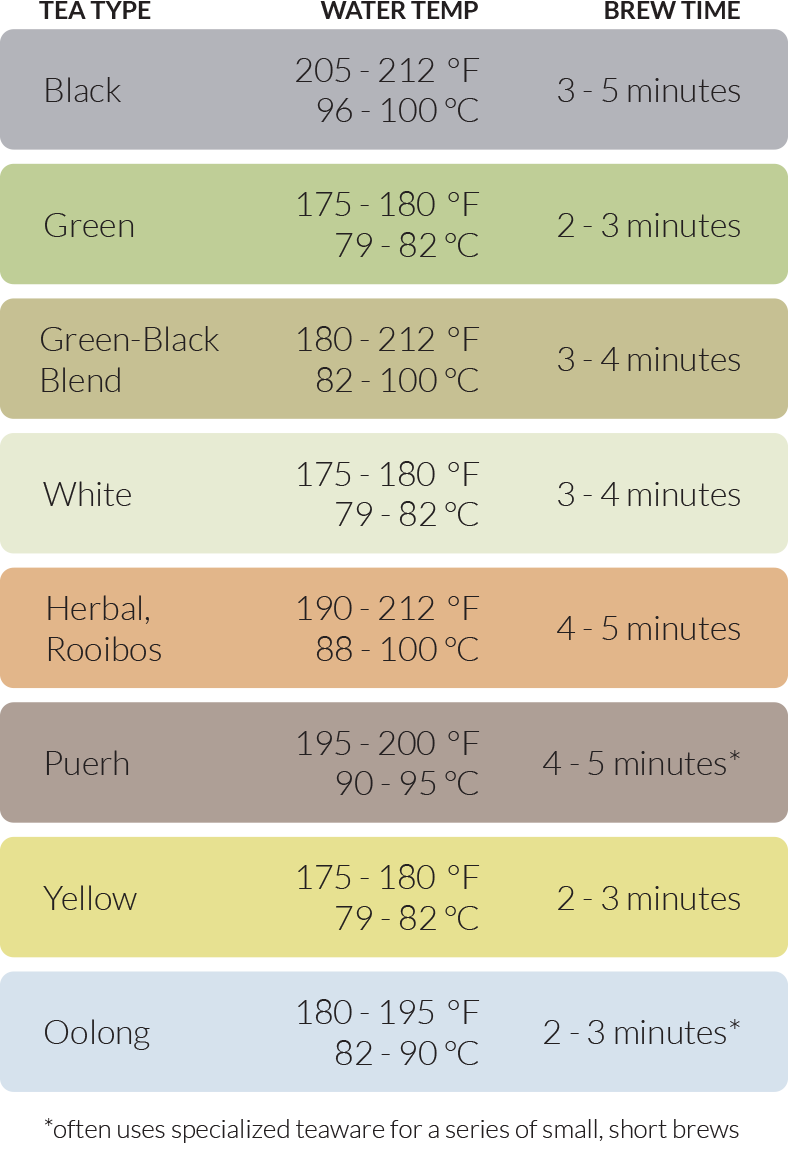
Steeping the Best (Guide)
Different types of teas should be steeped according to certain times and water temperatures to bring out their best flavours. Use this guide as a starting point, and then experiment until you find the perfect brewing method for your favourite tea.
Based on approximately one level teaspoon (2.5 g) of loose tea or one tea bag per 6-8 ounce (180-240 mL) cup. For stronger flavour, add more tea. Brewing for longer may increase the strength of the tea, but will likely also cause bitterness.
Tea Bags vs. Loose Tea
While our tea bags and loose tea are crafted to match the same flavour profile, there are discernable effects between the two formats. Namely, the leaves inside tea bags is milled, making it much finer and a quicker brew, while loose tea can take a couple minutes longer to steep. Tea bags are very convenient, but loose tea can be more visually appealing and brewed with a reusable infuser.
- Tea bags: steep for 3 - 4 minutes
- Loose tea: steep for 4 - 5 minutes
General Steeping Temperatures
The table included here shows some general guidelines for steeping different kinds of tea. Be mindful that some teas, even two from the same category, will brew differently than others. In particular, our green-black blends will often have different ratios of green and black teas - the more green-leaning ones should be brewed at a lower temperature range. Experimentation is highly encouraged, as tea is very much a matter of personal taste.
Puerh and oolong teas are often steeped multiple times for a shorter period of time in smaller brewing vessels. This method creates a curious exploration of the tea as it unfurls, developing new flavours with each subsequent brew - often making for great social conversation.
If you're unsure, try steeping in the middle range for your tea type. If the result is too bitter, steep at a lower temperature or for a shorter time. If the result is flat, try a higher temperature.

